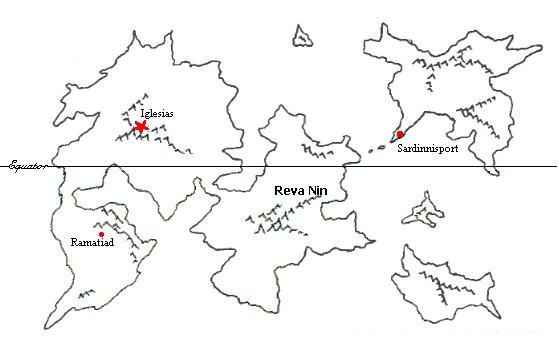Distance from primary (AU):
Distance from primary (million km):
Revolution (Terran years):
Revolution (Terran days):
Social:
Throughout the Empire, New Sardinia is particularly known for the quality of its arts, especially music. The annual Sardinian Arts Festival, coinciding with the Imperial holiday Walpurgis, is renowned throughout the galaxy. New Sardinia also boasts many five-nova restaurants, including Tariki's and the Redstar Room. Haussner's Ramatiad is often cited as the best gourmet restaurant in the Human galaxy.
Iglesias, New Sardinia's capital city, consists of a single tower 750 meters tall.Other important cities include the Imperial Navy base at Sardinnisport and the tropical paradise Ramatiad. The natural beauties of the Reva Nin mountain range are breathtaking; the entire range has been set aside as an Imperial Park and is one of the most popular tourist destinations in the galaxy.
Additional:
New Sardinia's five moons are in a 3:4:6:8:10 orbital resonance, with the following periods:
1 (Nicia) - 5.92 days - second-smallest
2 (Liluri)- 7.38 days -third-largest
3 (Graicia) - 9.85 days - largest
4 (Sycia) - 14.79 days - second-largest
5 (Gilnarei) - 19.72 days - smallest
The result of this resonance is that all five moons are in the same portion of the sky every 59.2 days. Although exact eclipses of all five are very rare, it's not unusual for 2 or even 3 moons to eclipse one another during this period.
When the conjunction occurs in midsummer (as it does just about every year), a planetwide festival called Ferragosto ensues. Ferragosto typically lasts three days and resembles Carnival.

